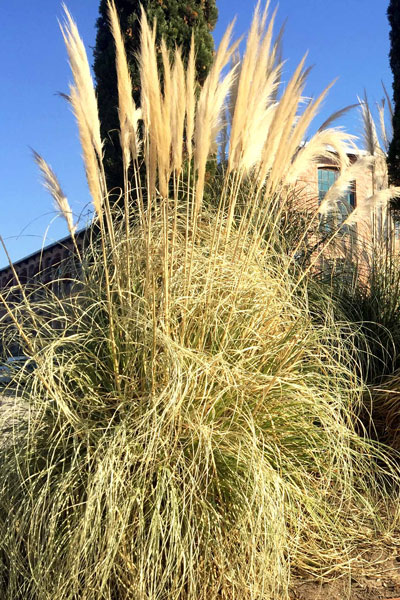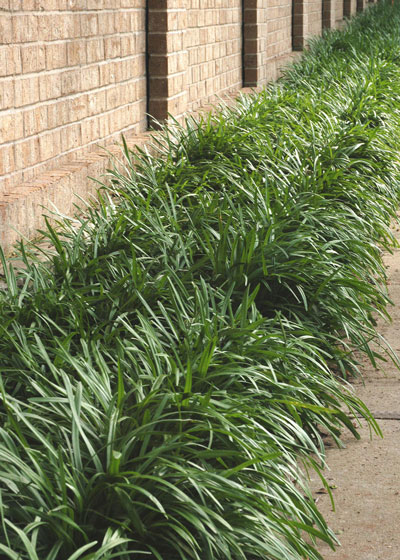Questions of the Week: February 14, 2019
I’m going to answer two similar questions about totally unrelated planted. The timing couldn’t be better.

Pampasgrass may need to be trimmed.
“Should pampasgrass be trimmed down?”
Only if it has sustained freeze damage. Pampasgrass is an evergreen grass in its South American native home. In the southern half of the state you will almost never need to trim it at all. Of course, it will grow to be 8 or 10 feet tall and wide.
In the northern parts of its growing region pampasgrass will be killed back by extreme winter cold on occasion. Those years you’ll want to remove the old, browned leaves before new growth begins.
Pampasgrass has very sharp leaves as we all have found out in working around it. Wear long sleeves and long pants. Gloves are a must, and so are goggles. You may want to use a machete, although power hedge trimmers will do, too.
As you’re trimming the old leaves, take care not to cut any of the new growth that is surging up from the centers of the plants. If you do, you’ll be looking at stubbed, browned leaf tips the rest of this growing season.
Follow your pruning with an application of a high-quality lawn fertilizer without any type of weedkiller included in it.

Liriope will rarely need to be trimmed.
“Should liriope be trimmed?”
Only if it has browned leaves due to cold or drought. You want to remove the browned foliage before new growth begins. As with pampasgrass, take care not to cut across any new leaves or you’ll have to look at them until this time next year.
If you do decide to trim your liriope, do it as soon as you can. New growth springs out really quickly. You’ll have to use very sharp power hedge trimming shears. Cut fairly high (6 or 7 inches). The new growth will quickly conceal it. However, save this type of trimming only for extreme cases of browning. I’ve grown liriope for 47 years and have never felt the need to do this.
